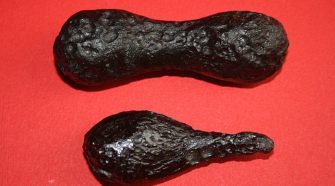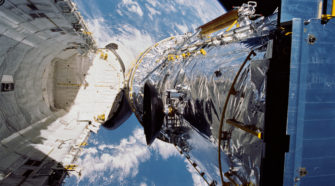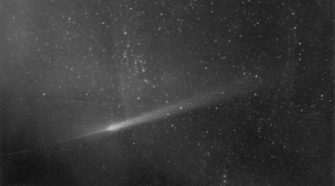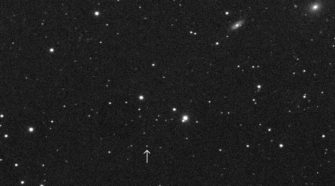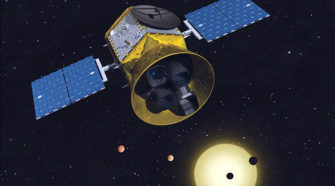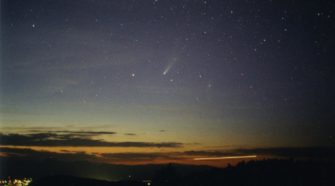Ice and Stone
Special Topic: Meteorites
Interplanetary space in the vicinity of Earth’s orbit – and, presumably, elsewhere as well – is littered with debris. Dust ejected from comets, bits and pieces of asteroids, rocks from various bodies . . . Meanwhile, Earth during its annual orbits around the sun is constantly sweeping up this debris. From the standpoint of terminology, …
This Week in History: April 19-25
APRIL 20, 1910: Comet 1P/Halley passes through perihelion at a heliocentric distance of 0.587 AU. Halley’s 1910 return, which is described in a previous “Special Topics” presentation, was quite favorable, with a close approach to Earth (0.15 AU) and the exhibiting of the longest cometary tail ever recorded. APRIL 20, 2025: NASA’s Lucy mission is …
Comet of the Week: Arend-Roland 1956h
Perihelion: 1957 April 8.03, q= 0.316 AU There weren’t any bright comets that appeared the year I was born, 1958, but two bright comets appeared the previous year. These two objects were the brightest comets to become easily visible from the northern hemisphere since the return of Comet 1P/Halley in 1910. The first of the …
Special Topic: Designations and Names of “Small Bodies”
Throughout “Ice and Stone 2020” I refer to numerous specific objects, including in all of my “Comet of the Week” presentations as well as in several of my “Special Topics” presentations and in the lists of weekly historical events. It is appropriate, then, to discuss how these various objects are designated and named. The conventions …
This Week in History: April 12-18
APRIL 13, 2029: The near-Earth asteroid (99942) Apophis will pass just 0.00026 AU from Earth, slightly less than 5 Earth radii above the surface and within the orbital distance of geosynchronous satellites. At this time this is the closest predicted future approach of a near-Earth asteroid. The process of determining future close approaches like this …
Comet of the Week: 153P/Ikeya=Zhang P/2002 C1
Perihelion: 2002 March 18.98, q = 0.507 AU One of the many successful Japanese comet hunters of the 1960s was Kaoru Ikeya who, coming from a family of modest means, built a homemade telescope for the equivalent of US$20 and began to hunt comets with it. He discovered his first comet in 1963 and would …

